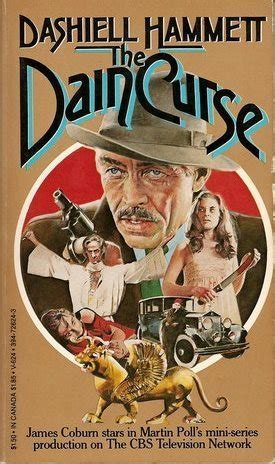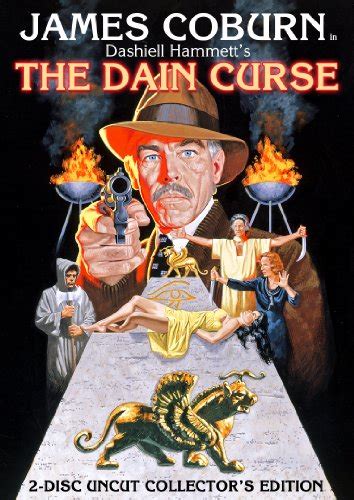


The Dain Curse (1929) was Hammett’s second Continental Op novel following Red Harvest (also 1929). The Dain Curse was originally published in serial format in the Black Mask Magazine in 1928 and 1929 actually in four parts, although the novel form is divided into three parts, the Dains, the Temple, and Quesada. Many years later, it became a television production with James Coburn (1978), where unfortunately the Continental Op is finally given an actual name some fifty years after the Dain Curse was published.
The Continental Op is a private detective whose name is never mentioned of the Continental Detective Agency in San Francisco where he answers to “the Old Man.” Hammett himself was formerly a detective with the Pinkerton Agency out of the Continental Building. He wrote most of his stories while living in San Francisco, the setting for the Dain Curse (at least until the action moves to Quesada, a fictional location eighty miles along the coast from San Francisco).
Reading the Dain Curse in novel form, it is easy to see how it was originally published as a serial. It consists of the three interlinked parts which form one overall story, but each of which contains its own mystery story complete in itself. Recurring characters include the Continental Op (of course), Gabrielle Leggett (of the cursed Dain family by way of her mother), Eric Collinson (Gabrielle’s fiance), and Owen Fitzstephen (a writer and family friend of the Leggets).
Part One introduces the reader to the Dain curse itself as the Continental Op, working for an insurance company, seeks to ferret out the disappearance of some diamonds that Edgar Leggett (a scientist) was lent to see if he could color them the way he had colored glass. They live in an opulent San Francisco mansion, but as we get to know them, we will realize that they have an odd family history that makes the Addams Family look tame by comparison with murder, prison, and the like being par for the course. The blame for the theft seems to fall initially on the maid (Minnie Hershey) who actually plays a part in both parts one and two of the novel. She is often referred to as a “mulatto” who lives in “Darktown” with a boyfriend who is little more than a poolhall hustler. But the Continental Op keeps at it as the Leggetts, by turn, seem to fall upon themselves in utter despair and turn against each other. Part one ends in a manner which would lead the reader initially to believe that it has fully concluded and that the rest of the book is unrelated.
Part two focuses on Gabrielle, who is a dope addict and a cult member and believes she suffers from a horrible family curses that wreaks havoc on anyone close to her. All the action here takes place inside the Temple, a sort of cult mansion where the operators prey on the rich and lonely, keeping them doped up and pranking them with ghosts and fog and the like. The Continental Op’s job is merely to watch over Gabrielle who is in quite a fragile state. He is barely competent at this as the bloody corpses pile up around her. Again, part two (the Temple) ends as if the entire mystery were solved and completed which makes sense as it was originally published separately as were all the parts.
Part three continues the twisted saga of Gabrielle and the Continental Op. Gabrielle is now married to the big dope who keeps getting in the Continental Op’s way in parts one and two, Eric Collinson. Here, all the action pretty much takes place in Quesada, a coastal hamlet eighty miles from San Francisco and having no relation to any location currently on the map. It is a small town along the cliffs and the Continental Op receives a telegram or a call from Collinson to come immediately to the small town where the newlyweds have secluded themselves to escape the media. But the small rural town is no safer for Gabrielle and Eric than the big city as the Continental Op keeps stumbling on corpses and kidnappers are leaving ransom demands and small-town jealousies and infidelities impede the investigation. It all comes to a startling conclusion as the Continental Op finally puts together the entire mystery, linking together the three parts and putting an end to the curse.
All in all, the Dain Curse is an outstanding mystery story even though the parts seem oddly disconnected because they were originally shorter stories.